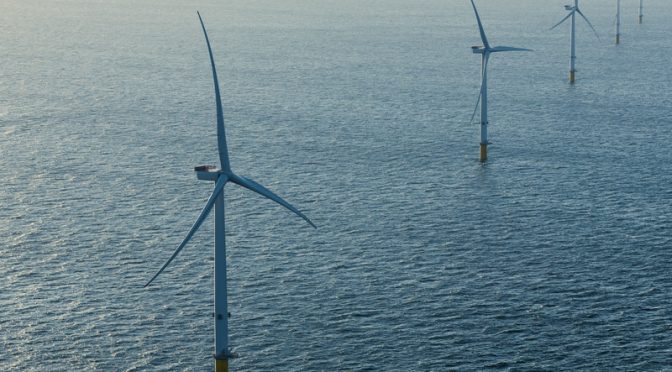Connecticut on Thursday selected Vineyard Wind’s 804-megawatt Park City project as the winner of its first offshore wind solicitation, setting up the seaport city of Bridgeport to become a significant hub for the emerging U.S. market.
MHI Vestas is supplying Vineyard’s first offshore wind farm with turbines.
Connecticut regulators said Vineyard won with a price “lower than any other publicly announced offshore wind project in North America.”
Vineyard Wind, which competed against rival development groups backed by Ørsted and Shell in the solicitation, will now have the opportunity to negotiate a final contract with Connecticut’s two electric utilities. The project is due for completion in 2025.
Vineyard’s win adds another huge project to the pipeline underway in waters in the northeastern U.S., where state offshore wind targets have rapidly grown to exceed 20 gigawatts.
Vineyard, owned by Avangrid and Copenhagen Infrastructure Partenrs, won the first major U.S. offshore wind solicitation last year in Massachusetts, for an 800-megawatt project sited south of Martha’s Vineyard.
That was followed this year by a quartet of solicitations in New Jersey, New York, a second one in Massachusetts, and now Connecticut — handing projects to a list of developers that includes Ørsted, Equinor and Mayflower Wind (a joint venture of Shell New Energies and EDP Renewables).
Like those other states, Connecticut moved quickly with its 2019 offshore wind solicitation in order to allow the winning project to maximize its use of the fading Investment Tax Credit, whose future remains uncertain.
Surging demand for offshore wind power from states running from Massachusetts down through Virginia has driven up the cost of development zones to record levels. The industry is anxiously awaiting the auction of more such zones in 2020 off the coasts of New York and California.
On a conference call with journalists, Vineyard Wind CEO Lars Thaaning Pedersen declined to put an exact price tag on the “multi-billion dollar” Connecticut project, but he noted that Vineyard’s similarly sized project in Massachusetts will cost around $3 billion.
Big win for Bridgeport
It’s now standard — and in many cases obligatory — for offshore wind developers to include economic development commitments with their offshore wind bids for states.
As part of its Connecticut proposal, Vineyard promised to spend or invest nearly $900 million locally. Bridgeport — the state’s largest city, located along Long Island Sound — will be the main beneficiary.
Among Vineyard’s plans for Bridgeport are redeveloping an 18-acre waterfront property known as Barnum Landing to act as an offshore wind staging site, and establishing an operations and maintenance facility where as many as 100 permanent jobs will be based.
Vineyard has also pledged to buy a portion of the cables it will use for its project from a facility owned by Kerite in nearby Seymour, Connecticut, creating what it says will be “America’s first Tier 1 offshore wind supplier.”
Ørsted has made similar redevelopment commitments to the Connecticut town of New London, potentially setting up the state to host two offshore wind hubs some 70 miles apart. Vineyard is using New Bedford, Massachusetts as the staging ground for its first 800-megawatt offshore project, won last year in Massachusetts’ first solicitation.
On the call, Pedersen said he anticipates breaking ground at the onshore facilities in Bridgeport in 2021, taking 18 to 24 months to complete them, and then beginning the two-year offshore construction process in 2023.
Huge chunk of state’s power
When it comes online in 2025, Park City is expected to generate the equivalent of 14 percent of Connecticut’s total electricity supply. That figure rises to 19 percent when previous offshore wind contracts the state has signed with Ørsted are added in.
Among U.S. states, only tiny Rhode Island has a higher percentage of its electric load under contract with existing or future offshore wind farms, at 25 percent. New Jersey recently jumped its offshore wind target to 7.5 gigawatts, with Governor Phil Murphy claiming half of the state’s electricity could come from offshore wind by the mid-2030s.
Delay off Massachusetts
Vineyard’s pioneering project off Massachusetts was initially due for completion over two phases in 2021-22, but it was unexpectedly delayed earlier this year when the federal government insisted on conducting more environmental studies.
Pedersen said Vineyard anticipates the Bureau of Ocean Energy completing its studies “during the first half of 2020.”
Vineyard’s Connecticut project will be included in BOEM’s cumulative impacts study, Pedersen said, hopefully making it unlikely it will face permitting delays of its own.


